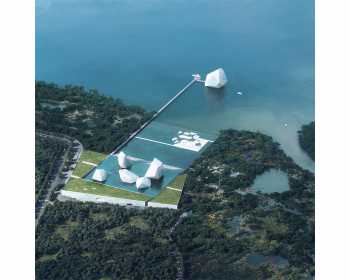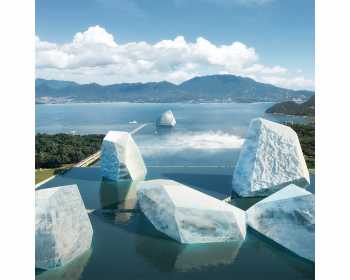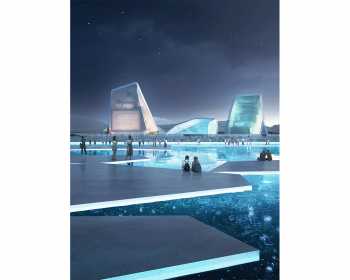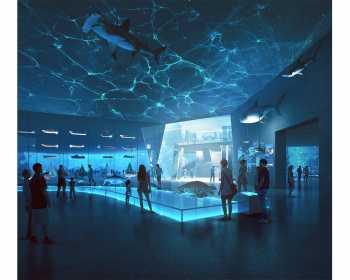The Icebergs and the Sea
OPEN's competition entry for Shenzhen Maritime Museum, the Icebergs and the Sea, is one of the three winning schemes chosen by a jury panel from schemes of 15 prominent international architectural teams.
Six glass ‘icebergs’ arise from the subtropical coast — the design is intended to raise awareness to the issues of global warming and marine environmental protection. Icebergs bring a surprising and refreshing image to this hustle-bustle subtropical metropolis, while ringing an alarm bell: the impact of melting ice caps at the poles may not be that far away from our everyday life!
The Maritime Museum is one of Shenzhen's "Ten New Major Cultural Facilities" and a new cultural landmark as Shenzhen strives to develop itself as a global maritime center. The site and the peninsular it situates within, not yet developed in real-estate terms, already registering significant human disturbances to ocean ecology — extensive fish farming, nuclear power stations, petroleum plants, are the embodiment of our environmental vulnerability and urgency of the crisis.
It is an incredible opportunity, and a perilous one at the same time, to build a museum about ocean by the ocean, at this moment of history and on this particular site. It’s time of great urgency to act carefully and collectively on worsening environmental crisis facing humankind.
Taking coastal ecology as the point of departure, OPEN proposes to turn confrontation into symbiosis. Replacing the planned hard and tall sea dike with a soft zone of defense in between two layers of seawalls at different heights. This in-between zone will be occupied by restored mangrove wetland, a natural protective barrier which also serves as habitat for marine life and migrating birds.
Above the roof of the main exhibition space is the manmade Inland Sea pond which levels with the higher seawall. This strategy not only minimizes the impact of the frequent seasonal typhoons on the building, but also greatly reduces the heat load on this large-scale exhibition building in the sub-tropical climate. The main exhibition space is an expansive and tall floor allowing for maximum flexibility and easy curatorial operation. All exhibition rooms can be individually and conveniently serviced by a logistics corridor loop.
The research, office and storage components of the museum are accommodated in a glacier-like sloping volume covered by vegetation. Naturally filtered water drawn from the mangrove wetland runs down the slopping roof, gets further filtration by the roots of plants, and finally enters the Inland Sea pond to compensate for evaporation.
Five double-layered glass iceberg-like volumes rise from the Inland Sea which house the main public programs: lobby, theater, library, and children's education, while providing visitors the sense of orientation and places to rest. One Iceberg ‘drifts’ away into the ocean, with an impressive dome theater inside. It's the apex of the whole museum journey.
Between land and sea, architecture breathes in and out with nature, humbly.
The proposed museum builds itself as an organic element of nature, establishing a new and balanced ecosystem. The building intends to be an active part of marine education.
| Designboom | OPEN architecture envisions shenzhen maritime museum as a cluster of glass icebergs call_made
Facts
Year:
Location: Shenzhen, China
Floor area: 100,000
Site area: 57,756
Type: Architecture
Client: -
Status: Competition









